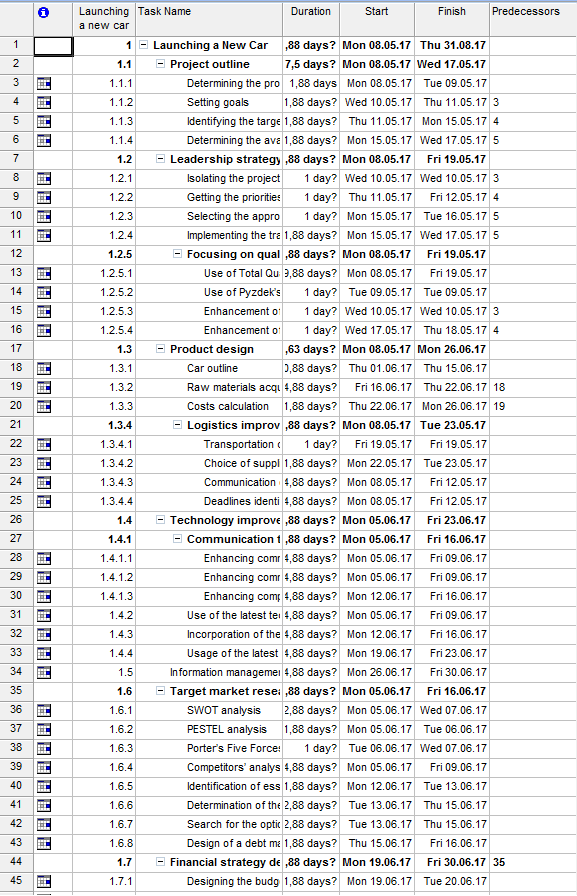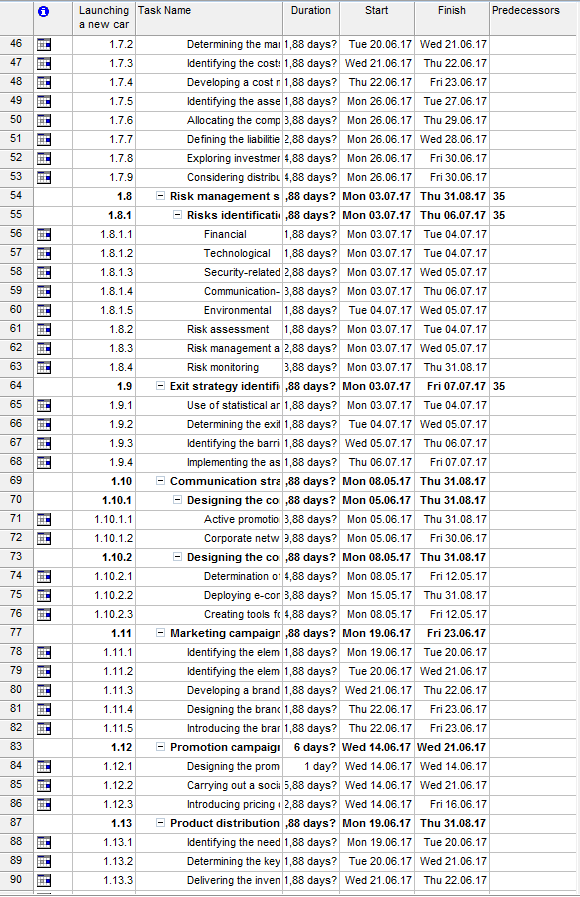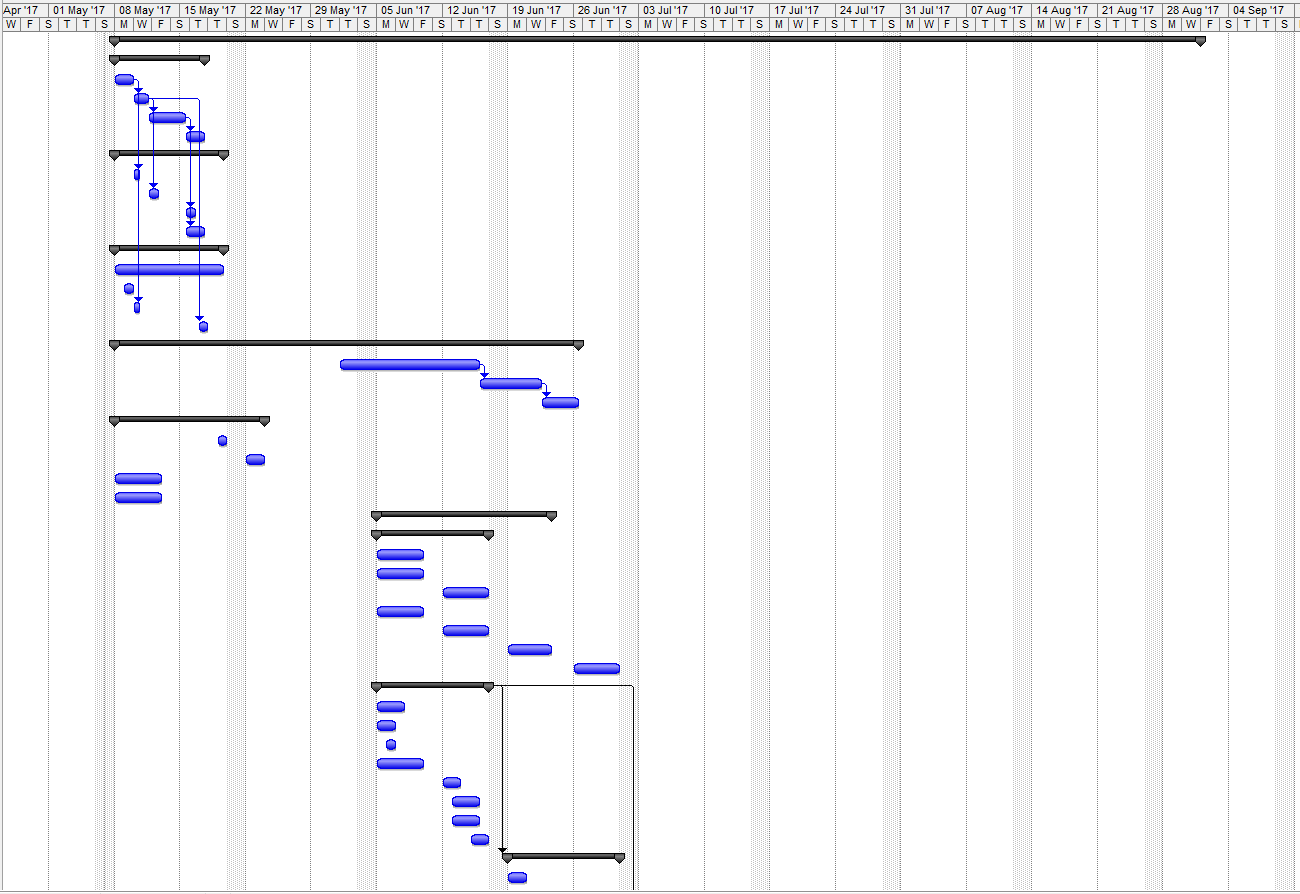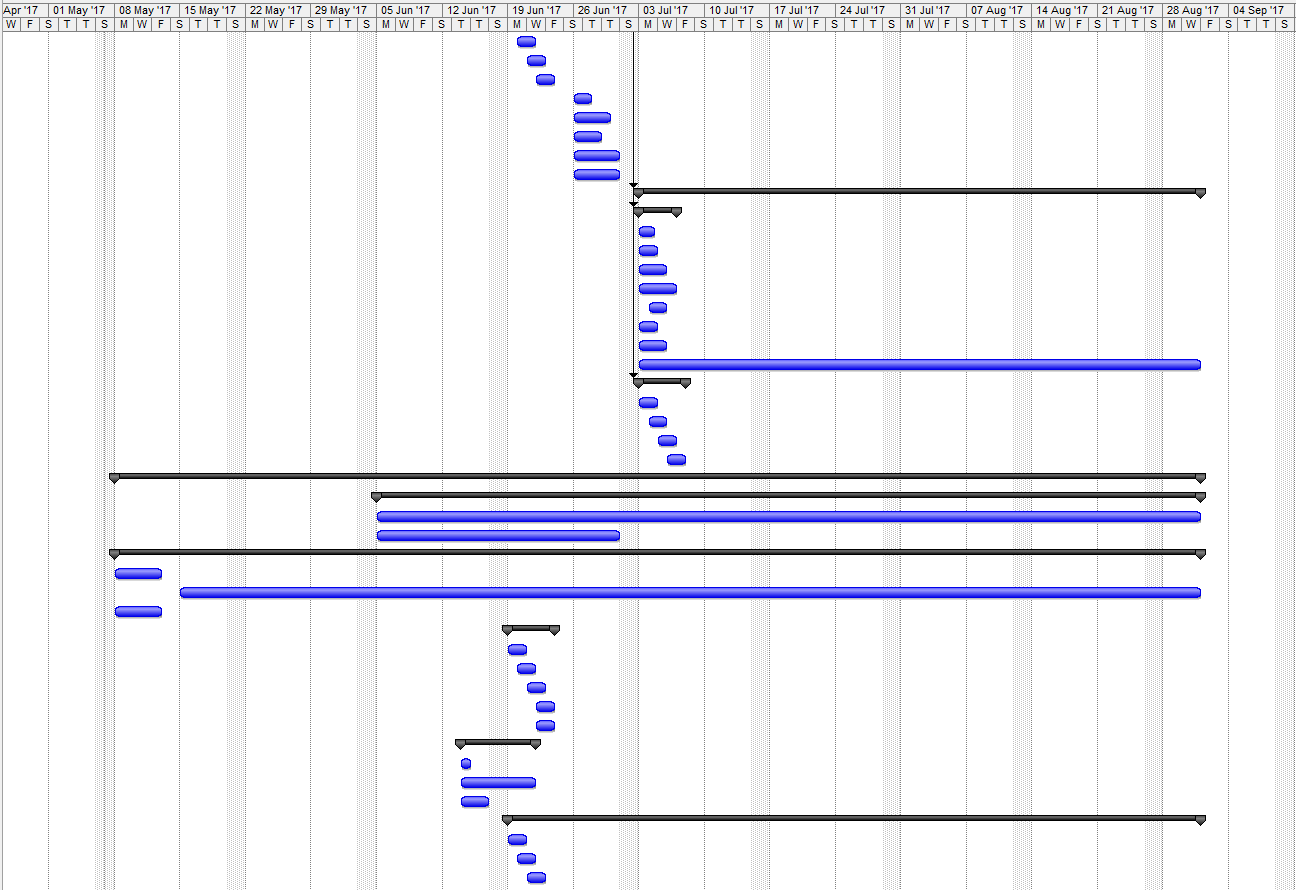Value
Launching a new product into the market is always fraught with numerous challenges, the threat of being ousted from it by competitors, and the inability to address the financial risks being the key ones. Therefore, determining the business value of the project is crucial to the overall success of the venture and the management of the relevant obstacles that the project developers may have to deal with in the process. Therefore, identifying the project value is a crucial stage of creating the foundation for business success (Gray & Larson, 2011).
The identification of the value of the current project is especially significant. Given the fact that the automotive industry is already a very competitive area, with corporate monsters such as Toyota, Tesla, GM, and other organizations working on environmentally-friendly options for drivers, the plank has been raised very high. Thus, identifying the possible value of the identified project, with all possible expenses to be taken in the process, as well as the opportunities for managing the corporate assets accordingly, is imperative (Hartung, 2012).
The value of the project charter is going to be quite high. The improved engine specifications, which will allow boosting the performance of the vehicle to the nth degree, can be viewed as a significant competitive advantage that can be used to promote the car efficiently. While the expenses are bound to be rather numerous, it is expected that a cost-efficient strategy based on careful use of the company’s resources and an adequate waste management approach will help address the identified issue (Gray & Larson, 2011).
Components
Seeing that the project in question is very large, it is going to have a range of components. Not only the production-related aspects of the project but also the ones associated with marketing, cost management, logistics, etc., will have to be addressed. Therefore, it will be reasonable to split the project into the following components:
- Product design;
- Target market research;
- Financial strategy development;
- Risk management strategy development;
- Exit strategy identification;
- Communication strategy development;
- Promotion campaign;
- Production of the car;
- Product distribution.
Therefore, it will be imperative to consider all possible issues that may occur when entering the target market. The issues associated with the competition will have to be managed first so that the car could have a significant competitive advantage and attract the target audience successfully. By carrying out an efficient promotion campaign, one will be able to attain success. However, an exit strategy in case of failure will also have to be designed.
Stakeholders
The project implies collaboration between a number of experts and different teams. Therefore, there is a range of stakeholders in the project. Particularly, the project developers, managers, customers, shareholders, suppliers, distributors, and investors must be viewed as the key stakeholders of the project. It is essential that the needs of each must be taken into account and met accordingly when implementing the project.
Position Analysis
Project developers determine the success of the product in the target market, and, therefore, their position and attitude can be viewed as rather positive. Managers, in turn, control the crucial processes and help maintain the quality levels positive, which means that their position is neutral rather than negative. Customers will become the focus of the project, thus, setting their position and attitude as positive. The needs of shareholders are not to be underestimated, either; therefore, they take a positive position and attitude as well. Suppliers have a negative position and attitude in the context of the project since they have low bargaining power.
The same cannot be said about distributors, though; the identified stakeholders take the neutral position and attitude in the list of the significant stakeholders. Finally, investors provide the foundation for the development of a successful financial strategy, which means that their position and attitude are also positive (Sheldrake, 2014).
WBS




Cost and Time Estimates
As the WBS structure above shows, it is expected that the project will be completed within a month. It should be noted, though, that possible delays can be expected. To address the identified issue, one will have to consider using the latest time management techniques and communication tools. Thus, possible issues regarding the transportation process and communication with suppliers can be avoided.
It is assumed that the project will cost approximately $2,000,000. Most of the resources ($1,000,000 and $500,000) will be used to design the product and market it to the target population. Therefore, the R&D and Marketing Departments will be provided with the greatest amount of resources. The rest will be allocated in a sustainable manner to the Quality Management Department ($25,000), the risk management processes ($75,000), the rent ($350,000), and miscellaneous issues ($50,000).
Description
Creating the environment in which the project will thrive is crucial. Therefore, one must make sure that the project should be planned with all important elements in mind. Particularly, it will be necessary to adders the issues such as the choice of the leadership strategy, the tools for maintaining good quality standards, the proper use of the available resources (including financial ones), the design of appropriate communication tools for maintaining a connection with customers, suppliers, and other stakeholders, etc.
It is crucial to focus on setting the goals, identifying the resources, and designing an appropriate information management strategy first. Thus, the foundation for consistent improvement of the product and service quality can be created. Furthermore, the emphasis on corporate values and communication is bound to build the foundation for the successful representation of the car to the target customers (Brockmann, 2015).
Conducting extensive market research is the next essential step in building a sustainable approach toward introducing the car to the target environment. Before working on the competitive advantage and how it can be positioned, one should consider the specifics of the market, the customers’ needs and demands, especially as far as the technical characteristics of cars are concerned, etc. as a result, a range of errors and misunderstandings can be avoided successfully (Fleisher & Bensoussan, 2015).
The research results will pave the way for the identification of the strategies toward the product promotion, the choice of the marketing tools, the communication process between the target population and the company, the risk management approaches, etc. Furthermore, with a detailed overview of the competitors, their strengths and weaknesses, and the factors that affect the company’s progress in the target market, one will be able to find the niche that the product in question can fill in the car market (Mohamad, 2015).
Communication Plan
Retail car companies should be viewed as the target audience for the project. To address the stakeholders in question, one will have to consider using both traditional and modern (IT) communication tools, such as social networks. The idea of a car that is environmentally friendlier than other products, cheaper than the available options, and is of high quality, will be delivered to the target audience. Social media, online advertisement, and direct (e-mail) marketing will be used as communication channels. Therefore, it will be necessary to contact potential customers directly.
Project Network

As the project network depicted above shows, there are certain time constraints within the project. Seeing that the stages of the project are interrelated, it will be necessary to make sure that all processes related to the project development should flow and that the information management should be carried out impeccably. As a result, the design of a flawless end product and the further provision of the services of the best quality can be expected. As the chart above shows, there is a need to focus on the development of the appropriate leadership strategy and the information management approach that will serve as the premises on which the rest of the strategies will be built.
Afterward, it will be crucial to focus on market research, which, in turn, will lead to a gradual development of the competitive advantage of the product. The tools for introducing the latter to the target audience, in turn, will be designed as soon as the previous stages are completed. Simultaneously, a coherent and mild promotion strategy, together with the application of the relevant marketing tools, will have to be used. Thus, the project will attract the attention of the target audiences. Furthermore, the absence of obtrusive elements and the use of positive and memorable messages will help cement the brand image in people’s minds, therefore, leading to a rapid increase in sales.
References
Brockmann, C. (2015). Sustainable supply chain management. Case studies in the consumer electronics industry. New York, NY: GRIN Verlag.
Fleisher, C. S., & Bensoussan, B. E. (2015). Business and competitive analysis: Effective application of new and classic methods. New York, NY: FT Press.
Gray, E. W., & Larson, G. (2011). Project management (5th ed.). New York, NY: McGraw-Hill.
Hartung, A. (2012). Why Tesla is beating GM, Ford and Toyota: Electric cars. Forbes. Web.
Mohamad, M. (2015). Advertising and promotion. Marketing communications in advertising and promotion in business. New York, NY: GRIN Verlag.
Sheldrake, J. S. (2014). Technology, business and the market: From R&D to desirable products. London, UK: Ashgate Publishing, Ltd.